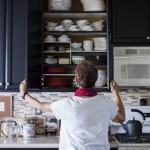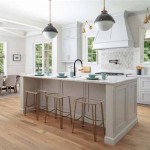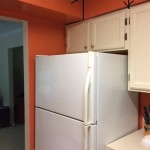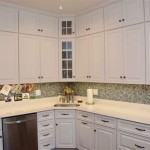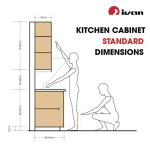Essential Aspects of Kitchen Cabinet Paint
When planning a kitchen remodel, cabinet paint plays a crucial role in transforming the overall aesthetic and functionality of the space. Choosing the right paint can protect your cabinets from wear and tear, enhance their appearance, and create a cohesive design scheme. This comprehensive guide will explore the essential aspects of kitchen cabinet paint to help you make informed decisions for your project.
Choosing the Right Paint Finish
The paint finish is vital in determining the durability and visual appeal of your cabinets. Gloss finishes are highly reflective, creating a sleek and modern look. However, they can also accentuate any imperfections in the surface. Matte finishes, on the other hand, provide a more subtle and textured appearance, making them ideal for hiding imperfections. Semi-gloss finishes offer a balance between gloss and matte, combining durability with a more traditional look.
Paint Quality: Opting for Durability
The quality of paint is key to ensuring the longevity of your painted cabinets. High-quality paints contain better pigments and resins, resulting in a more durable and colorfast finish. Look for paints specifically designed for kitchen environments, as they withstand heat, moisture, and grease. Brands known for their quality kitchen cabinet paints include Benjamin Moore, Sherwin-Williams, and Valspar.
Determining the Right Color Scheme
The color of your kitchen cabinets should complement the overall decor of the space. Consider the size of your kitchen, the amount of natural light, and the existing flooring and countertops. Lighter colors, such as white or cream, make small kitchens appear more spacious. Darker colors, such as navy or black, can create a dramatic and sophisticated atmosphere. Accent colors can be incorporated on one or two cabinets to add a touch of personality.
Preparing Your Cabinets for Painting
Proper preparation is vital for a professional-looking finish. Remove all hardware and any existing paint or varnish. Clean the cabinets thoroughly with a degreaser to remove any residual grease or dirt. Sand the surface lightly to create a smooth base for the paint. Use wood filler to patch any holes or imperfections.
Priming for Adhesion
Applying a primer before painting is crucial for enhancing the adhesion of the paint. It helps create a uniform surface, preventing the paint from absorbing unevenly into the wood. Choose a primer specifically designed for kitchen cabinets, as they contain stain-blocking agents and provide additional durability.
Painting Techniques for a Flawless Finish
Use a brush or roller specifically designed for painting cabinets. Apply the paint in thin, even coats, allowing each coat to dry completely before applying the next. Avoid overworking the paint, as this can create streaks or runs. Use a light sanding block between coats to remove any imperfections and create a smooth finish.
Conclusion
With careful consideration of these essential aspects, you can achieve a professional-looking and durable finish for your kitchen cabinets. Choosing the right paint finish, opting for quality paint, selecting a complementary color scheme, preparing your cabinets thoroughly, priming for adhesion, and employing proper painting techniques are key to creating cabinets that enhance the beauty and functionality of your kitchen for years to come.

How To Paint Kitchen Cabinets In 7 Simple Steps

How To Paint Kitchen Cabinets The Love Notes Blog

How To Paint Kitchen Cabinets Best Color Ideas Cost

How Much Time Will It Take To Paint My Kitchen Cabinets Favorite Painters

Light Vs Dark Paint Ideas For Your Kitchen Cabinets

Pro Tips For Painting Cabinets In Your Home Paintzen

How To Paint Kitchen Cabinets In Four Easy Steps For Really Smooth Results Express Co

Painted Kitchen Cabinets One Year Later The Palette Muse

How To Paint Kitchen Cabinets

Should I Paint Or Refinish My Kitchen Cabinets
Related Posts

